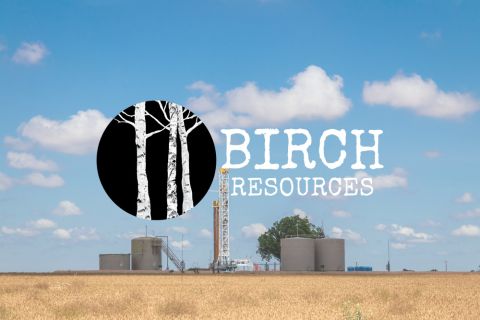
British Columbia was aflutter in the months leading up to 2013.
But it was a quiet kind of excitement. Astounding wells results, shale exploration, joint ventures and liquefied natural gas (LNG) exports were all in play in the north.
In the Duvernay, companies were likely keeping quiet about what they’ve found in the Canadian shale.
“It’s still relatively early stages for the Duvernay,” Hugh Hopewell, senior upstream research analyst for Wood Mackenzie, told Hart Energy. “We suspect that some of the operators are keeping quiet about their results and not making them public.”
But big players are in the area, including Chevron and Shell, lured by the prospects of vast resource reserves, Hopewell said. And on Dec. 13, PetroChina (NYSE: PTR) agreed to pay about $2.2 billion to Encana Corp. (NYSE: ECA) in a joint venture to explore and develop Encana's Duvernay land holdings in west-central Alberta.
Canadian Natural Gas Exports, Imports & Domestic Sales - Bcf
| Year | Exports | Imports | Sales |
| 2008 | 3,672 | 563 | 2,648 |
| 2009 | 3,363 | 730 | 2,659 |
| 2010 | 3,376 | 801 | 2,637 |
| 2011 | 3,274 | 1,106 | 2,806 |
Source: Canadian Gas Association
Encana expects to more than double its planned pace of development in the Duvernay play beginning early in 2013.
In the Liard and Horn River basins in British Columbia, Apache Corp. (NYSE: APA) announced Dec. 24 that its subsidiary Apache Canada Ltd. agreed to build and operate the Kitimat LNG project with Chevron Canada Ltd. The companies’ goal is to develop world-class shale gas resources.
Hopewell estimates the resource potential of the Montney, Horn River and Liard Basin at 280 trillion cubic feet (Tcf).
Bearing out that promise was a June announcement by Apache of long-term test results from three wells at Liard, including the D-34-K well which was drilled to a vertical depth of 12,600 feet. The 30-day initial production rate averaged 21.3 million cubic feet (MMcf) of gas per day. The ultimate recovery from the D-34-K well is estimated to be 18 billion cubic feet (Bcf) of gas.
“We believe this is the most prolific shale gas resource test in the world,” said G. Steven Farris, Apache's chairman and chief executive officer.
And, for Canada, the race is on to build LNG facilities as U.S. shale gas saps Western Canada’s exports.
British Columbia’s coast has become a hotspot for developers of LNG export projects headed for new markets in Asia.
Gas producers would draw from the Horn River, Duvernay and other basins sitting on trillions of cubic feet of natural gas. Ultimately, though, it could be a long slog. The current slate of projects suggests the first Western Canadian LNG is unlikely before 2019.
U.S. natural gas production has been so prodigious that in the past five years Western Canada’s gas exports have fallen 4 Bcf/d, Hopewell wrote last year.
Combined with low gas prices, Western Canada’s annual gross revenue from gas exports has declined by about U.S. $26 billion, or 80% since 2008.
Though U.S. export growth could return, Asian markets are alluring to Canadian upstream sellers that also enjoy support from provincial and federal governments in Canada, Hopewell said.
“The proposed Canadian LNG projects could leverage off the massive gas resource that has emerged in Western Canada,” he said.
Canada’s marketable natural gas is estimated to be between 733 and 1,304 Tcf, a supply that could last a century at current production rates, according to the Canadian government.
“The region is home to other plays currently at earlier stages of exploration, but with huge potential,” Hopewell said. “These include the liquid-rich Duvernay shale and the remote Cordova Embayment, which could further boost Canada’s gas resource base.”
The Montney and Horn River plays are considered the more established resource plays. Montney is the most attractive resource with breakeven costs as low as $2.40 per million Btu (MMBtu), assisted by its liquids-rich content.
Canadian Natural Gas (billion cubic feet)
| 2010 | Canada | North America | World | Rank |
| Production | 5,390 | 28,504 | 111,333 | 3 |
| Consumption | 2,913 | 29,286 | 113,321 | 10 |
| Net Export/Imports(-) | 2,477 | -629 | -- | 89 |
Proved Reserves (Trillion Cubic Feet) | 62 | 379 | 6,669 | 20 |
Source: U.S. Energy Information Administration
The economics of dry Horn River shale gas are challenged by its more remote location and carbon dioxide content. As a result, Montney gas is better positioned to be monetized for exports as LNG, to the U.S. or the domestic market, Hopewell said.
“Recognizing the more cost competitive nature of Montney gas, companies have been positioning themselves in this low-price gas resource,” he said. “This includes companies with legacy positions in Horn River, and those actively pursuing LNG, as seen in the proposed acquisitions of Progress by Petronas and Celtic Exploration by ExxonMobil. For other operators holding gas resources but with no LNG plans, there are still opportunities ? larger companies could enter into JVs, while smaller companies could prove to be attractive acquisition targets.”
However, LNG will require time-consuming and costly infrastructure development. Asish Mohanty, senior gas supply analyst for Wood Mackenzie, said a liquefaction facility, port infrastructure in a remote location and development of a multi-billion dollar pipeline up to 500 miles long makes such a project expensive compared to other such facilities.
Gaining environmental and local stakeholder support would also be important for the fate of a proposed pipeline and liquefaction facility. Some projects could have as much as two years of engineering and permitting work to do and might fail anyway.
However, Canada’s relative closeness to Asian markets and low cost gas could enable a Canadian LNG trade could be competitive.
World Gas Producers
| Producer | Bcm* | % of world | |
| Russian Federation | 677 | 20.0 | |
| United States | 651 | 19.2 | |
| Canada | 160 | 4.7 | |
| Qatar | 151 | 4.5 | |
| Iran | 149 | 4.4 | |
| Norway | 106 | 3.1 | |
| China | 103 | 3.0 | |
| Saudi Arabia | 92 | 2.7 | |
| Indonesia | 92 | 2.7 | |
| Netherlands | 81 | 2.4 | |
| Rest of world | 1,126 | 33.3 | |
| World | 3,388 | 100.0 |
Source: International Energy Agency; *billion cubic meters
Though global LNG supply competition will restrict exports, Wood Mackenzie said Canadian LNG has some advantages: low political risk, value chain equity investment opportunities, potential for local market sales and the potential to offer liquids rich gas using low cost local liquefied petroleum gas, something that will appeal to specific Asian buyers.
High costs in Australia, delays in East Africa and U.S. regulatory uncertainty could also aid Canada.
“The intensity of future corporate positioning will be influenced by the outcome of ongoing regulatory corporate acquisition approvals," Mohanty said.
Contact the author, Darren Barbee, at dbarbee@hartenergy.com.
Recommended Reading
EY: How AI Can Transform Subsurface Operations
2024-10-10 - The inherent complexity of subsurface data and the need to make swift decisions demands a tailored approach.
E&P Highlights: Oct. 7, 2024
2024-10-07 - Here’s a roundup of the latest E&P headlines, including a major announcement from BP and large contracts in the Middle East.
Petrobras Awards SLB Another Contract Offshore Brazil
2024-12-12 - Petrobras has awarded JV SLB OneSubsea a contract for raw water injection systems a day after Petrobras selected SLB to handle integrated services at its offshore fields.
Hot Permian Pie: Birch’s Scorching New Dean Wells in Dawson County
2024-10-15 - Birch Resources is continuing its big-oil-well streak in the Dean formation in southern Dawson County with two new wells IP’ing up to 2,768 bbl/d.
Oceaneering Acquires Global Design Innovation
2024-10-30 - Oceaneering purchased Global Design Innovation, the only provider certified by the United Kingdom Accreditation Service (UKAS) to perform remote visual inspection using point cloud data and photographic images.
Comments
Add new comment
This conversation is moderated according to Hart Energy community rules. Please read the rules before joining the discussion. If you’re experiencing any technical problems, please contact our customer care team.





